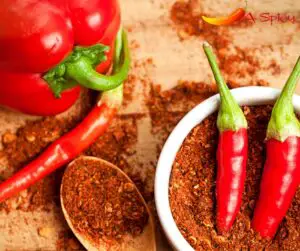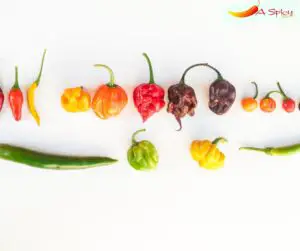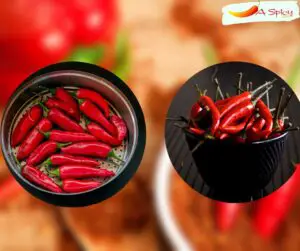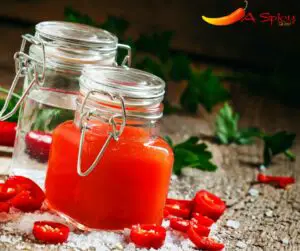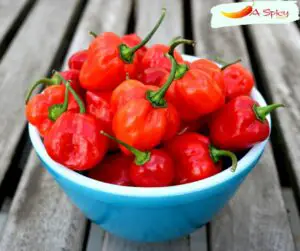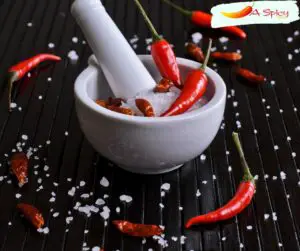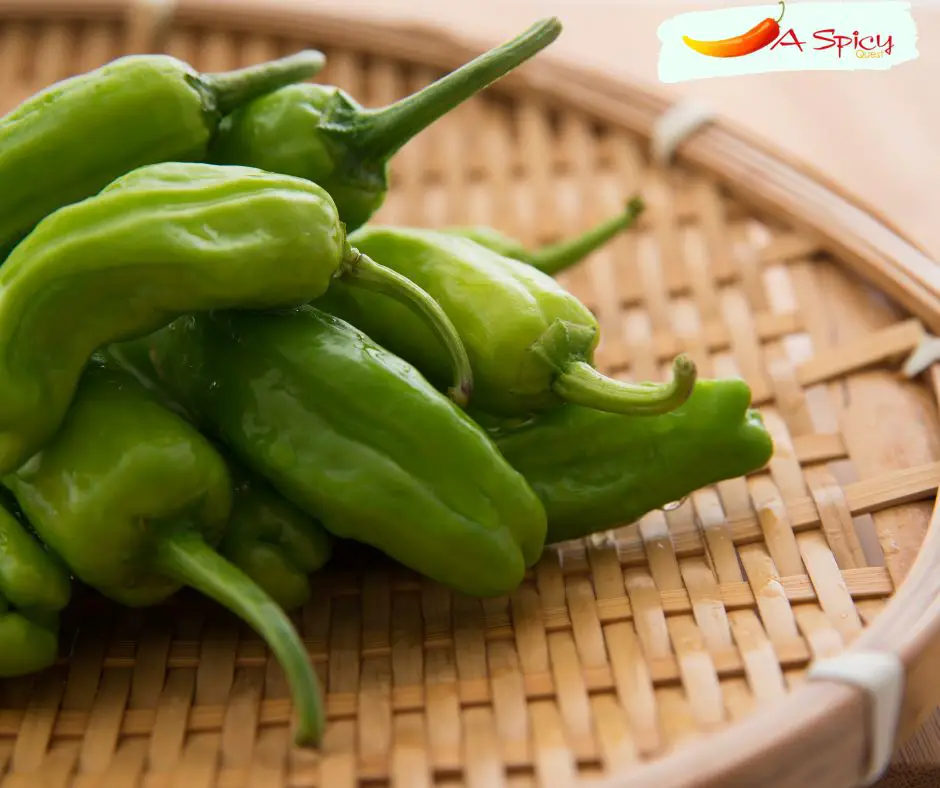
Shishito peppers are a popular Japanese variety of chili pepper that you see in many different types of cuisine, including Mexican, Chinese and Korean. The shishito pepper is also commonly called the “Japanese green pepper” or “Japanese finger pepper.” The peppers themselves have a unique flavor that makes them great for adding to your favorite recipes. But do Shishito peppers have capsicum? I will answer these questions and more in this article.
Do Shishito Peppers Have Capsicum?
Yes, they do. Shishito peppers are a type of Capsicum annuum, which means they belong to the same species as jalapeños and bell peppers.
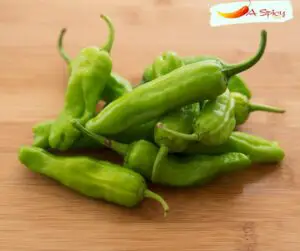
But unlike their more common counterparts, shishitos are milder than most other capsicums. They have a similar flavor profile though—slightly sweet with some heat—so if you like jalapeños or poblanos but want something less spicy, Shishitos may be right up your alley.
How Did Shishito Peppers Get Their Name?
There’s one interesting thing to note about the name of these peppers: it doesn’t actually refer to a type of pepper at all. Instead, shishito peppers are named after the Japanese word for “lion.” Both green and red bell peppers are called “shishito,” and this is because their shape resembles a lion’s head.
How to Plant Shishito Peppers
Plant in spring or fall…
Planting
Shishito pea plants should be planted in full sun, and certainly not in shade! They grow best when they get a lot of sunlight, but if you don’t have an outdoor garden (or your climate is too warm for them to thrive), you can plant them in containers and bring them indoors during the winter if necessary.
The soil should be well-draining but moist; add extra compost or mulch to keep it hydrated. Water regularly throughout the growing season; depending on how much rain you receive where you live, this may mean watering once every few days until harvest time arrives.
Harvesting
Wait until all of your shishitos are 2-3 inches long before harvesting them—longer than that and they’ll become stringy and tough as they get older! Use scissors to cut these delicate little peppers off at their base; they’ll taste better if eaten green rather than turning red later on.
Where Are Shishito Peppers Grown?
Shishito peppers are a good choice for container gardening, as they can tolerate the conditions that they would find in a large, sunny garden. If you have limited space or live in an area with cold winters and frost, consider growing your peppers in containers.
The recommended spacing between pepper plants is 18-36 inches apart (45-90 cm). These plants do not need to be staked and should not be pruned unless they become too leggy or tangled with other plants.
In order to ensure a crop early on, it is best to start seeds indoors around six weeks before transplanting outside after all danger of frost has passed. Shishito peppers do not produce fruit until they reach maturity so if you want plenty of sweet peppers this year then it’s best to start planting now.
How to Cook With Shishito Peppers
You can cook with shishito peppers in many different ways. They’re a great addition to soups or salads, and they can also be used as an alternative to bell peppers or jalapeños in stir-fries. You can also use them as toppings for pizzas and sandwiches (although if you’re using them on a sandwich, I’d recommend keeping the amount at about two or three).
If you want to try something new but are feeling overwhelmed by all the options out there, shishitos are a good place to start. They’re easy to find at grocery stores, and they have that fantastic smoky flavor that most people love.
What Do Shishito Peppers Taste Like?
These peppers taste sweet, salty, and spicy. They’re milder than other peppers so they won’t light your mouth on fire. You can eat them raw or cooked; both ways will give you an explosion of flavor in each bite.
The best part about Shishito Peppers is that their flavor isn’t overpowering like jalapeño or habanero peppers are. The taste of these mild peppers is more subtle than other chili varieties and can be enjoyed alone or paired with other foods for a well-rounded meal.
What Should I Look For When Buying Shishitos?
Shishito peppers are available in a wide array of colors and varieties. Some have a wrinkled appearance, while others have smooth skin that’s almost translucent. Shishitos should be firm and bright green, with no signs of yellow or brown coloring. You should avoid picking up limp peppers or those that are wrinkled or blemished.
The best shishito peppers will have a strong, spicy flavor—they’ll stand out as being peppery compared to other hot peppers you might find in the store.
How Many Calories Are in Shishito Peppers?
Shishito peppers are low in calories, with each serving containing around 15 calories. In comparison, a medium-sized apple contains about 50 calories. That’s four times as many.
Health Benefits of Shishito Peppers
1. They are antioxidants
Shishito peppers are a good source of antioxidants, which are compounds that help to fight free radicals. Free radicals can damage cells and increase the risk of cancer, heart disease, and other health problems. Examples of antioxidants include beta-carotene and vitamin C.
2. Anti-inflammatory properties
Shishito peppers are a good source of vitamin C and antioxidants, which can help reduce inflammation.
Shishitos are great for people with inflammatory conditions such as arthritis because they contain anti-inflammatory compounds called capsaicinoids (the same ones found in hot chili peppers). Plus, they don’t make your mouth burn as regular chilies do; instead, they give off a woodsy aroma.
3. High in vitamin C
Vitamin C is an antioxidant, which means it helps boost the immune system and protect your body from free radicals. It also helps with wound healing, aids in iron absorption (important for vegans), and even makes your skin look better.
4. Good source of fiber
Shishito peppers are a good source of fiber, which is part of what makes them so filling. Fiber helps to keep you full, so you won’t be tempted to overeat later on. It also works to maintain a healthy digestive system, which can help you feel less bloated and experience fewer digestive issues—a win-win!
Fiber may also help lower cholesterol levels in the body. Besides being good for your heart health, this can help reduce your risk of developing other health conditions such as diabetes or stroke.
Can Eating Too Many Shishito Peppers Make You Sick?
While Shishito peppers are mildly spicy and contain capsaicin, they do not cause the same kind of irritation that regular hot peppers do. They can be eaten in moderation without any problems. However, if you eat too many at once, they could give you a stomach ache or make your mouth burn.
If you’re new to eating raw peppers (or any other type), it’s best to start with just one or two at first and then work your way up from there.
You’ll know when you’ve had enough of your mouth burns or feels irritated afterward—be sure to drink plenty of water after consuming any amount of these fruits so that the capsaicin does not build up in your stomach and lead to an upset stomach later on.
How Long Can You Freeze Shishito Peppers?
Shishito peppers are best stored in the freezer for about 10- 12 months, but no more than a year. To freeze your shishitos, place them in an airtight container or bag and squeeze out as much air as possible before sealing. This will help prevent freezer burn on your peppers and ensure they taste fresh when you take them out later.
Conclusion
Shishito peppers are a part of the capsicum species. They are a delicious, flavorful addition to your meals. They’re easy to grow at home and make an excellent snack when in season. You can grow them yourself if you want and you will find out that they are milder than the rest of their species.

